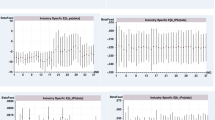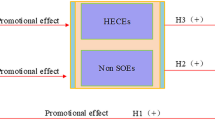Abstract
Energy sources are of paramount significance in the contemporary landscape, categorically classified into two main types: (i) primary sources, encompassing a wide spectrum ranging from nuclear energy to fossil fuels like natural gas and oil; and (ii) renewable sources, including geothermal, hydropower, solar, and wind energies. Governments have taken proactive measures since 2010, culminating in the establishment of the Bureau of Energy Efficiency under the Energy Conservation Act, aimed at curtailing energy consumption across diverse economic sectors. The interconnectedness of energy consumption, environmental ramifications, and economic progress is undeniable. A noteworthy project originating in 2010 is rooted in the pioneering market-based mechanism known as the perform, achieve, and trade (PAT) framework, which predominantly targets industrial energy utilization. Given the substantial role of energy costs within the broader spectrum of total production expenses, it becomes imperative to gauge the profit margin intensity (PMI) within energy-intensive sectors and industries encompassed by the PAT initiative. This entails an exploration of the influence exerted by these sectors on PMI. Consequently, the identification of variables influencing industrial profitability with respect to energy employment becomes pivotal. This article introduces a methodology grounded in panel data analysis, applied to a specific case study involving Indian energy-intensive corporations. The investigation takes into account the impact of both the Energy Conservation Act (ECA) and PAT as dichotomous covariates. Notably, the ambit of PAT encompasses the eight most energy-intensive industries in India, spanning the years 2012 to 2015. India stands among the world’s foremost energy consumers, with its industrial sector notably emerging as the largest energy consumer in 2015. Evidently, energy serves as a driving force behind the country’s manufacturing costs. The findings of this study underscore a negative correlation between energy costs and profitability. While the overall impact of PAT on industry performance appears limited, the ECA emerges as a potent factor significantly affecting earnings. Moreover, a compelling indirect relationship between energy costs and profitability is discerned, wherein rising revenues correspondingly lead to amplified energy costs. Consequently, the implications drawn from our study are intricately linked to the efficacy of energy utilization regulations within energy-intensive industrial contexts. The statistical analyses integral to this study were diligently carried out using the R software.









Similar content being viewed by others
References
Baltagi BH (2021) Econometric analysis of panel data. Edition 6. Springer, New York, NY, USA
Bertoldi P, Rezessy S, Lees E, Baudry P, Jeandel A, Labanca N (2010) Energy supplier obligations and white certificate schemes: comparative analysis of experiences in the European Union. Energy Policy 38:1455–1469
Bhandari D, Shrimali G (2017) The perform, achieve and trade scheme in India: an effectiveness analysis. Renew Sustain Energy Rev 81:1286–1295
Bhandari D, Shrimali G (2018) The perform, achieve and trade scheme in India: An effectiveness analysis. Renew Sustain Energy Rev 81:1286–1295
Carmona M, Feria J, Golpe AA, Iglesias J (2017) Energy consumption in the US reconsidered. Evidence across sources and economic sectors. Renew Sustain Energy Rev 77:1055–1068
Chow GC (1960) Tests of equality between sets of coefficients in two linear regressions. Econometrica 28:591–605
Christiansen AC, Wettestad J (2003) The EU as a frontrunner on greenhouse gas emissions trading: how did it happen and will the EU succeed? Clim Policy 3:3–18
Clarkson PM, Li Y, Pinnuck M, Richardson GD (2015) The valuation relevance of greenhouse gas emissions under the European Union carbon emissions trading scheme. Eur Account Rev 24:551–580
Dasgupta S, Roy J (2017) Analysing energy intensity trends and decoupling of growth from energy use in Indian manufacturing industries during 1973–1974 to 2011–2012. Energ Effic 10:925–943
de Andrade Guerra JBSO, Berchin II, Garcia J et al (2021) A literature-based study on the water-energy-food nexus for sustainable development. Stoch Env Res Risk Assess 35:95–116
de la Rue du Can S, Khandekar A, Abhyankar N, Phadke A, Khanna NZ, Fridley D, Zhou N (2019) Modeling India’s energy future using a bottom-up approach. Appl Energy 238:1108–1125
Dutta M, Mukherjee S (2010) An outlook into energy consumption in large scale industries in India: the cases of steel, aluminium and cement. Energy Policy 38:7286–7298
Franzò S, Frattini F, Cagno E, Trianni A (2019) A multi-stakeholder analysis of the economic efficiency of industrial energy efficiency policies: empirical evidence from ten years of the Italian white certificate scheme. Appl Energy 240:424–435
Gaurav N, Sivasankari S, Kiran GS, Ninawe A, Selvin J (2017) Utilization of bioresources for sustainable biofuels: a review. Renew Sustain Energy Rev 73:205–214
Greene WH (2008) Econometric analysis. Prentice Hall, Saddle River, USA
Hamrin J, Vine E, Sharick A (2007). The potential for energy savings certificates as a major tool in greenhouse gas reduction programs. Report of the Center for Resource Solutions, Henry P. Kendall Foundation, Boston, MA, USA. Available at: http://resource-solutions.org/wp-content/uploads/2015/08/Draft_Report_ESC_V12_cleanFINAL_5-24-07.pdf
Hausman JA (1978) Specification tests in econometrics. Econometrica 46:1251–1271
Hsiao C (2007) Panel data analysis-advantages and challenges. TEST 16:1–22
Hsiao C, Mountain DC, HO-Illman K (1995) Bayesian Integration of end use metering and conditional deman analysis. J Econom 109:107–150
Hudedmani MG, Soppimath VM, Hubballi SV, Kundur Z (2019) Perform achieve and trade (PAT) a revolutionary measure in energy efficiency and conservation-review. Int J Adv Sci Eng 6:1206–1212
Kumar A (2003) Energy intensity: a quantitative exploration for Indian manufacturing. IGIDR Working Paper, 152. Available at http://papers.ssrn.com/sol3/papers.cfm?abstract_id=468440
Kumar R, Agarwala AK (2013) Renewable energy certificate and perform, achieve, trade mechanisms to enhance the energy security for India. Energy Policy 55:669–676
Langniss O, Praetorius B (2006) How much market do market-based instruments create? An analysis for the case of white certificates. Energy Policy 34:200–211
Liming H (2009) Financing rural renewable energy: a comparison between China and India. Renew Sustain Energy Rev 13:1096–1103
Mukherjee K (2008) Energy use efficiency in US manufacturing: a nonparametric analysis. Energy Econ 30:76–96
Oak H (2017) Factors influencing energy intensity of Indian cement industry. Int J Environ Sci Dev 8:331–336
Sahu SK, Narayanan K (2014) Energy use patterns and firm performance: evidence from Indian industries. J Energy Dev 40:111–133
Sahu S, Narayanan K (2009) Determinants of energy intensity: a preliminary investigation of Indian manufacturing industries. In: Proceedings of the 44th conference of The Indian Econometrics Society, 16606. https://mpra.ub.uni-muenchen.de/16606/1/MPRA_paper_16606.pdf
Saikawa E, Trail M, Zhong M et al (2017) Uncertainties in emissions estimates of greenhouse gases and air pollutants in India and their impacts on regional air quality. Environ Res Lett 12:065002
Sharma A, Roy H, Dalei NN (2019) Estimation of energy intensity in Indian iron and steel sector: a panel data analysis. Stat Trans New Ser 20:107–121
Springer U, Varilek M (2004) Estimating the price of tradable permits for greenhouse gas emissions in 2008–12. Energy Policy 32:611–621
Teng Y (2012) Indigenous R &D, technology imports and energy consumption intensity: evidence from industrial sectors in China. Energy Procedia 16:2019–2026
UNIDO (2012) Industrial energy efficiency for sustainable wealth creation: capturing environmental, economic and social dividends. Industrial Development Report 2011, United Nations Industrial Development Organization (UNIDO), Vienna, Austria.
Vasudevan R, Cherail K, Bhatia R, Jayaram N (2011) Energy efficiency in India: history and overview. Alliance for an Energy Efficient Economy, New Delhi, India
Verbeek M (2008) A guide to modern econometrics. Wiley, Chichester, UK
Vig S, Datta M (2023) The impact of corporate governance on sustainable value creation: a case of selected Indian firms. J Sustain Finance Invest. https://doi.org/10.1080/20430795.2021.1923337
Vine E, Hamrin J (2008) Energy savings certificates: a market-based tool for reducing greenhouse gas emissions. Energy Policy 36:467–476
Wang Q, Yuan X, Ren L, Ma C, Zhang K (2010) Is there a concrete relationship between energy consumption, economic development and environmental load in developing economies? A case study in Shandong Province, China. Stoch Env Res Risk Assess 24:1225–1231
Zhang ZX (1998) Greenhouse gas emission trading and the world trading system. J World Trade 32:219–239
Funding
None.
Author information
Authors and Affiliations
Corresponding author
Ethics declarations
Competing interests
The authors have not disclosed any competing interests.
Additional information
Publisher's Note
Springer Nature remains neutral with regard to jurisdictional claims in published maps and institutional affiliations.
Rights and permissions
Springer Nature or its licensor (e.g. a society or other partner) holds exclusive rights to this article under a publishing agreement with the author(s) or other rightsholder(s); author self-archiving of the accepted manuscript version of this article is solely governed by the terms of such publishing agreement and applicable law.
About this article
Cite this article
Sharma, P., Sharma, A., Leiva, V. et al. Assessment of profitability and efficiency of regulatory acts on energy-intensive industries: a panel data methodology and case study in India. Stoch Environ Res Risk Assess 37, 5009–5027 (2023). https://doi.org/10.1007/s00477-023-02536-8
Accepted:
Published:
Issue Date:
DOI: https://doi.org/10.1007/s00477-023-02536-8




